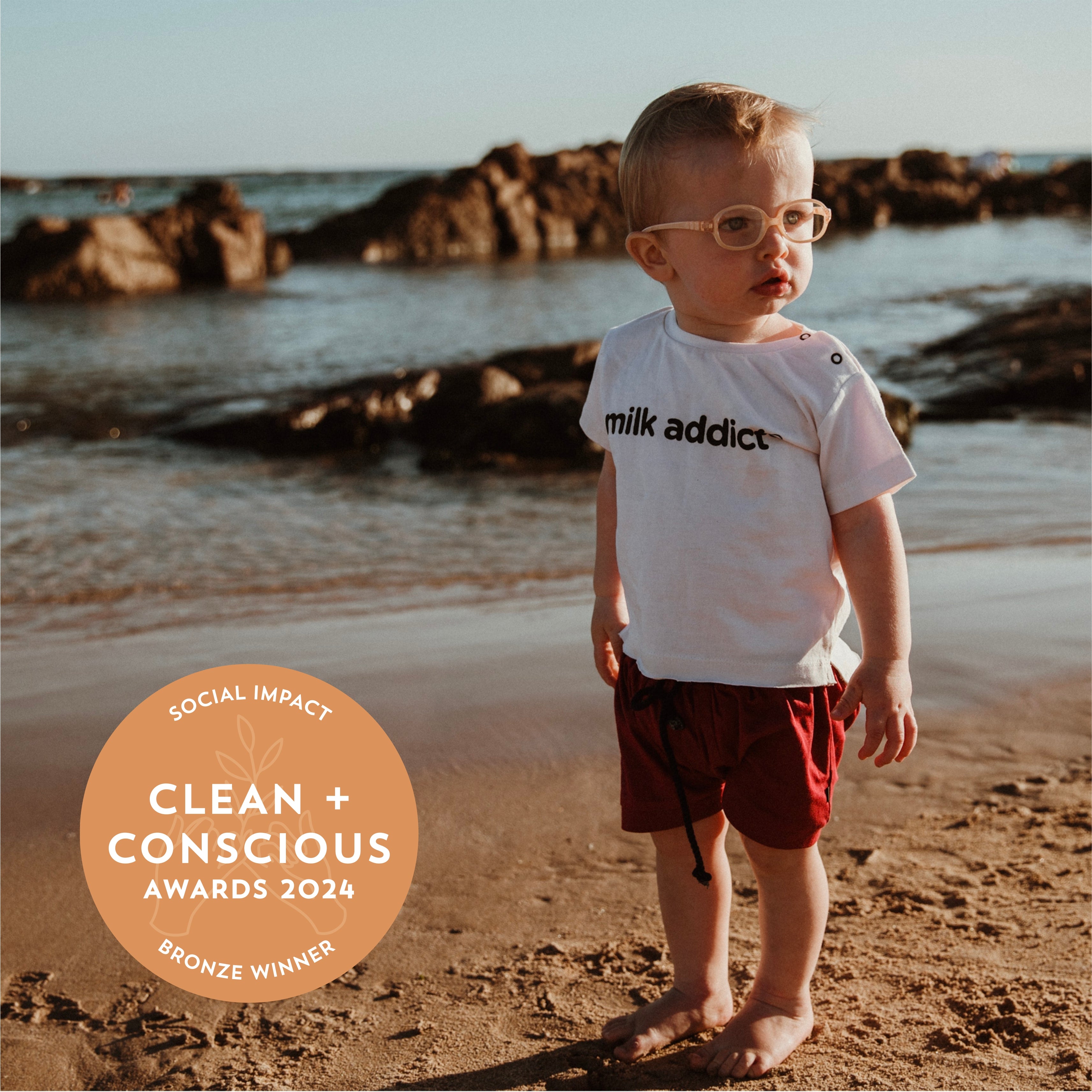Written by Phoebe Young for Pebble Magazine - Thu 10 Jun 2021
Are you a bit confused about fashion and just why so many are causing a fuss over it? We get so many questions on pebble about what is fast, slow and eco fashion. We've put together this simple guide to help you understand the devastating impact of fast fashion.
What’s Wrong With Fast Fashion?
Here's our take on some of the key issues caused by fast fashion brands. We've included tons of stats and further reading to get you clued up about clothes and their social and environmental impact.
What is fast fashion?
Fast fashion is the mass production of cheap, poor quality, disposable clothing.To give you an idea of the scale of the problem, the fashion industry churns out a gargantuan 80 billion garments a year.
That's over 10 for every person on earth. And it's 400% more than it produced 20 years ago.
According to clothes waste charity TRAID, the average garment is only worn 10 times before it is thrown away.
This diabolical disposable cycle is being fuelled because:
- Clothes are becoming cheaper.
- As their prices fall, so does their quality.
- While prices are dropping, fashion trends are accelerating.
This creates an incentive for people to buy more clothes to keep up with the latest trends.

Consumers tend to lack the incentive to take care of their clothes.
They know the next trend is right around the corner and their clothes will soo fall out of fashion. This means they dispose of them faster.
What’s wrong with this fast fashion system is that the majority of items are neither recycled nor donated.
Instead, they either go to landfill or get incinerated.
Every link in the fast fashion chain comes with huge environmental and societal costs.
Our clothes can take as long as 200 years to decompose...so our planet is getting polluted by more and more unnatural material all the time.
What's wrong with fast fashion? Why is it bad for the environment?
Fast fashion has a devastating environmental impact. Here are a number of ways the industry damages the planet:
Water usage
A byproduct from textile factories in countries that produce fast fashion items en masse is untreated toxic wastewater.What’s wrong with it? This textile waste contains substances like lead, mercury and arsenic that are extremely harmful to aquatic and human life.
- Wastewater from clothes factories gets dumped directly into rivers. In Bangladesh alone, 22,000 tons of toxic waste from tanneries goes straight into the waterways every year.
- This toxic water affects the health of the wildlife and people who live along the banks. It eventually runs into the sea and pollutes that as well.
- It can take up to 200 tons of fresh water to dye and finish just one ton of fabric.
- Extinction Rebellion and the UN have also found that 3.6 billion people (almost half the world's population) are at risk of water scarcity at some point during the year.
Microfibres
How can anything 'micro' be a big deal? Microfibres and microplastics are a key part of what’s wrong with the fashion industry.- Microfibres are microplastics that come away from synthetic fabrics like polyester and nylon every time you wash your clothes.
- Each wash sheds around 700,000 microfibres.
- These are consumed by aquatic organisms, which are eaten by fish, which are eaten by us! These cheap clothes are one of the sources putting plastic into our food chain.
"The fashion industry churns out a gargantuan 80 billion garments a year - that's over 10 for every person on earth"
Greenhouse Gasses
According to The Ethical Consumer and Greenpeace’s Journal, ‘Unearthed’, if the demand for fast fashion continues to grow at its current rate, we could see the total carbon footprint of our clothing reach 26% by 2050!
Here are a few reasons why:
-
Producing, manufacturing and transporting the millions of garments produced each year uses a lot of energy.
-
The synthetic fibres that most of our clothes are made of are generated from fossil fuels.
-
China, Bangladesh and India are the countries that produce the majority of our clothing. They are powered almost entirely by coal.
Deforestation
In order to produce food on planet earth, we need healthy soil and healthy forests. Both absorb CO2 so they are essential for preventing global warming too.
Yet another thing that’s wrong with the fast fashion industry, is that it hurts soil, woodland, and our entire ecosystems
-
Goats and sheep, raised for their wool, are overgrazed in pastures. Overgrazing leads to soil erosion, land degradation, loss of valuable plant species, food shortages and famine.
-
Chemicals used in the production of fabrics like cotton also degrade the soil.
-
Wood-based fibres, like rayon and viscose, cause mass deforestation.
-
Thousands of hectares of endangered and ancient rainforests are felled every year. They are replaced by plantations of trees used to make wood-based fabrics.
-
This harms indigenous communities as well as the Earth.
Toxins
So many chemicals go into every stage of textile production and manufacture:
- They are still very much present when we buy and wear our clothes! That even goes for garments that are ‘100% natural fibre’.
- Our skin absorbs all of these unnatural substances which endangers our health.
- The Greenpeace Detox campaign discovered 11 chemicals present in clothes production that are known to cause cancer and disrupt our hormones.
- Other studies have found that chemicals contained in children’s pyjamas can be found in the children’s urine five days after they wore said pyjamas for just a single night!
Human rights
There are so many more issues up and down the complex supply chains in massive fast fashion companies, but sadly, most go unreported in mainstream media. From environmental impact to human rights abuses, fast fashion has a lot to answer for. It doesn't look like it's slowing down anytime soon though. The first step in tackling this industry is awareness. The more people who know about what's going on behind the scene, the more we can start to get our voices heard and push for change. The next step is to advocate for brands that are actively fighting against fast fashion. Here are some of our eco-friendly favourites. This quick guide has given you an overview of some of the biggest issues in the fast fashion industry. If you're inspired to take action, here are three things you can do to reduce the industry's influence.



